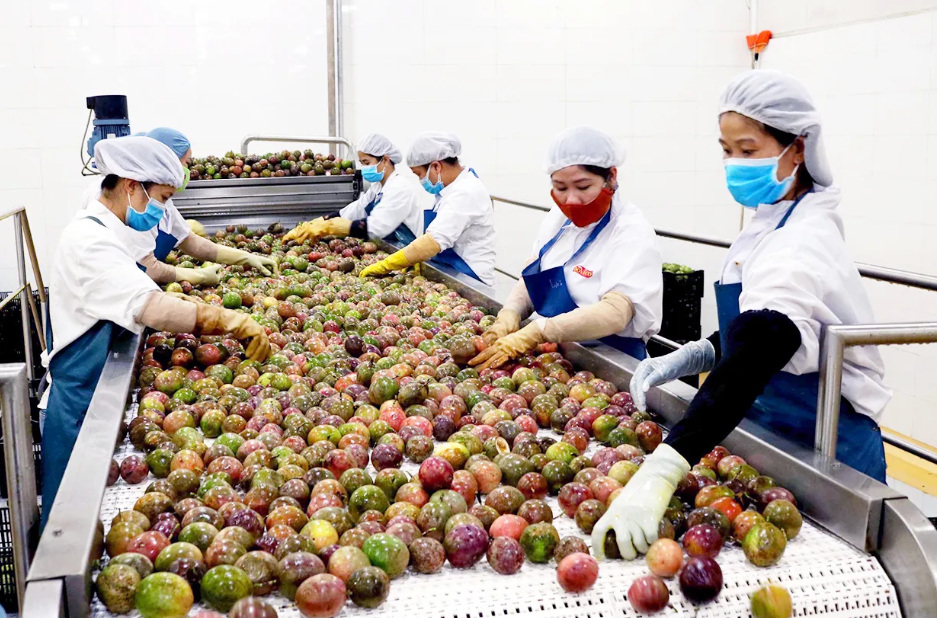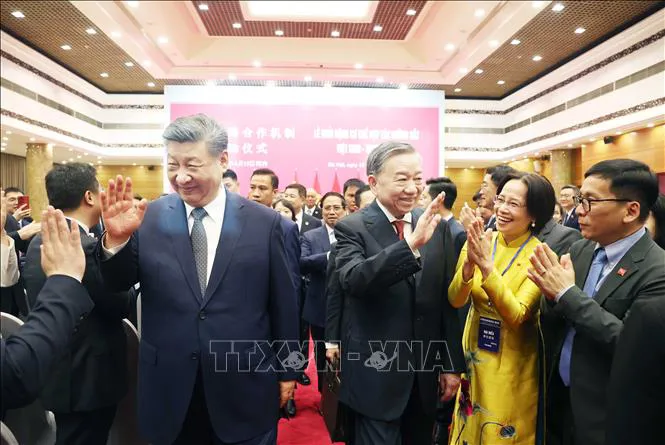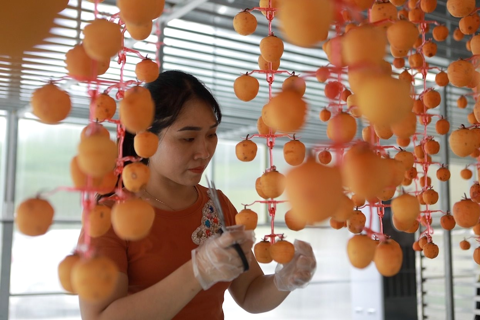More Vietnamese agricultural products to reach Chinese market
Currently, 14 Vietnamese agricultural products are officially exported to China, generating billions of dollars annually.
THE HANOI TIMES — Vietnam and China have signed a protocol paving the way for the export of products such as chili, passion fruit, raw and processed bird's nest and rice bran to the Chinese market.

Processing fruit for export at Dong Giao Export Food Joint Stock Company – Gia Lai Branch. Photo: Duc Thuy/The Hanoi Times
The move was announced as part of the Joint Statement between Vietnam and China during the visit of General Secretary and President Xi Jinping to Vietnam on April 14-15.
In addition to these products, China is actively completing procedures to permit other Vietnamese agricultural exports, such as citrus fruits and herbal medicinal plants of botanical origin. In return, Vietnam will accelerate the import of sturgeon from China.
Both countries also agreed to speed up the development of smart border gates at key border crossings, particularly at the Huu Nghi (Vietnam) - Youyi Guan (China) international border gate. This smart model will also be considered for expansion at other eligible border crossings, such as the Mong Cai - Dongxing border gate. Furthermore, "soft connectivity" measures, including smart customs systems, will be upgraded.
China expressed its willingness to facilitate the early establishment of additional Vietnamese trade promotion offices in Haikou (Hainan) and other relevant localities. Both sides will work together to enhance the efficiency of customs clearance at border gates, checkpoints, and cross-border markets, helping to ease congestion and improve trade flows.
Currently, 14 Vietnamese agricultural products are officially exported to China, generating billions of dollars annually.
Last year alone, Chinese consumers spent around US$4.6 billion on Vietnamese fruits and vegetables. In the first 11 months of the year, durian topped the list with an export value of more than $2.84 billion, followed by dragon fruit at $320 million, jackfruit at $240 million, and bananas at $220 million. The new agreements are expected to boost Vietnam's agricultural exports to China.
Previously, the surge in Vietnamese fruit and vegetable exports to China was supported by bilateral free trade agreements such as the ASEAN-China Free Trade Agreement, the Regional Comprehensive Economic Partnership (RCEP), and various protocols signed between the two countries.

General Secretary To Lam and General Secretary of the Communist Party of China and Chinese President Xi Jinping during a Vietnam-China Friendship Program in Hanoi on April 15. Photo: VNA
Vietnam shares over 1,450 km of land border with China. Moreover, many major Chinese wholesale markets are located near the northern border, just a few hundred kilometers from Vietnam's main agricultural production areas. This proximity allows for lower logistics costs and more competitive transportation compared to other countries.
According to the Joint Statement, both countries also committed to address trade and investment restrictions and reaffirmed their support for an open, transparent, and inclusive multilateral trading system. They emphasized the importance of non-discrimination, with the World Trade Organization (WTO) as the foundation for global trade rules.
According to the Ministry of Agriculture and Environment, Vietnam's agricultural export turnover reached US$15.72 billion in the first three months of 2025, up 13.1% from the same period in 2024. Asia remained the largest export market for Vietnamese agricultural products, accounting for 42% of the total share.
Among markets, China was the world's second largest importer of Vietnamese agricultural products, accounting for 17.3%.
The Vietnamese prime minister has set a GDP growth target of 4.0% for the agriculture sector in 2025, with total export turnover of agro-forestry-fishery products reaching US$64-$65 billion.
Deputy Minister of Agriculture and Environment Phung Duc Tien said it is a big challenge that requires the entire sector's efforts, including implementing free trade agreements, especially CPTPP, EVFTA, and both regional and bilateral agreements with other countries; more trade promotion; removing technical and trade barriers in key markets such as China, the US, and the EU; and developing new markets, such as the Halal market and the Middle East.








